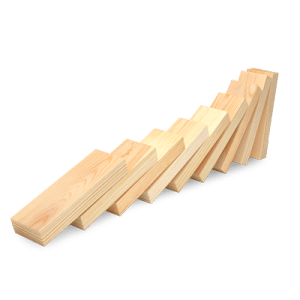
Overview
Get your students familiar with the ins and outs of energy transformations with this visual slideshow.
Instructions
What you'll need
- Chart paper or white board
- Scrap paper or small whiteboards for each pair of students
- Computer, projector and screen
- "Spot the transformations" slideshow
Forms of energy
- Start by asking students to name the 10 forms of energy and writing them on the board:
- Electrical
- Solar
- Wind
- Nuclear
- Light
- Thermal or heat
- Elastic
- Kinetic (energy of motion)
- Chemical
- Gravitational
- Explain that everyday items and devices work by changing one form of energy into another.
- The energy that starts things happening is called energy input.
- The energy form created is energy output.
Spot the transformations
- Have students find a partner while you pull up the “Spot the transformations” slideshow.
- Partners take a guess at the energy inputs and outputs being shown on each slide and jot them down.
- Review the energy inputs and outputs as a class as you go:
- Slide 2: A lamp transforms electrical energy to light energy. Depending on the type of lightbulb, there’s also heat energy.
- Slide 3: A rollercoaster converts gravitational energy at the top of the track to mechanical or kinetic energy as it travels down the track.
- Slide 4: Glow sticks convert chemical energy to light energy.
- Slide 5: A slingshot transforms mechanical energy to elastic energy as the slingshot is pulled back and elastic energy converts to mechanical or kinetic energy as it is released.
- Slide 6: An electric stove converts electrical energy to heat energy.
- Slide 7: Batteries convert chemical energy to electrical energy and the flashlight converts electrical energy to light energy.
- Slide 8: The chemical energy in fireworks transforms to mechanical energy as they shoot up into the sky as well as heat and light energy when they explode.
- Can students think of other examples of energy transformations? Share ideas as a class.
Modify or extend this activity
- Students create posters identifying energy inputs and outputs of an energy transformation.
- Have students identify 10 examples of energy transformations at home.
- Students design a device that transforms energy and identify the input and output.
Curriculum Fit
Grade 4 Science
Content
- Energy has various forms and is conserved
Curricular competencies
Questioning and predicting
- Demonstrate curiosity about the natural world
Evaluating
- Make simple inferences based on their prior knowledge
Applying and innovating
- Transfer and apply learning to new situations
Communicating
- Represent and communicate ideas and findings in a variety of ways, such as diagrams and simple reports, using digital technologies as appropriate
Assessments
- Assess student participation in partner work.
- Assess student ability to identify forms of energy and transformations taking place.
Teaching Notes
What is energy?
Energy is the ability or capacity to do work. Energy makes change possible. It is the power or ability to make things happen.
Forms of energy
Energy is all around us. The 10 forms of energy are listed below:
- Electrical energy is produced by the flow of an electric charge. We see or hear the result of this energy as something that turns on, lights up or gets warmer.
- Light energy travels in waves and is visible to us. Light energy is produced by sources such as the sun, fire or light bulbs.
- Sound energy is produced by vibrating objects and travels as sound waves. We hear sound energy in music, birds singing or a fireworks display.
- Thermal (heat) energy is produced by a number of sources such as the sun, a campfire and the oven. We feel this energy as warmth.
- Nuclear energy is stored in the nucleus of an atom and can be released when a heavy nucleus is split into two lighter nuclei (fission) or when two light nuclei join together into one bigger nucleus (fusion). The sun generates its energy through nuclear fusion. This energy can also be released to generate electricity.
- Elastic energy is stored in objects that can be stretched or compressed. We feel the tension when things bounce or are stretched.
- Chemical energy is stored in the bonds of molecules. Chemical energy can be found in food, a battery, gasoline and wood. When the energy is released it transforms into another form of energy. The chemical energy in a battery can be transformed into light energy in a flashlight.
- Magnetic energy is stored within a magnetic field and causes metals to attract or repel each other.
- Kinetic energy is the energy of motion. We can see this energy as things move and change position such as a skateboarder, a skier going downhill or a person walking.
- Gravitational energy is stored in an object due to its height and is caused by the pull of gravity. We see the result of this energy when something falls or feel it when we are jumping off a diving board.
The law of conservation of energy
The law of conservation of energy states that energy cannot be created or destroyed but can be changed. When something happens, energy is transformed from one form to another. The energy input is the energy that goes into an object or system and the energy output is the energy that comes out. For example, electrical energy is the energy input to a lamp and light energy is the output. Depending on the lightbulb used, thermal/heat energy may also be an energy output.







